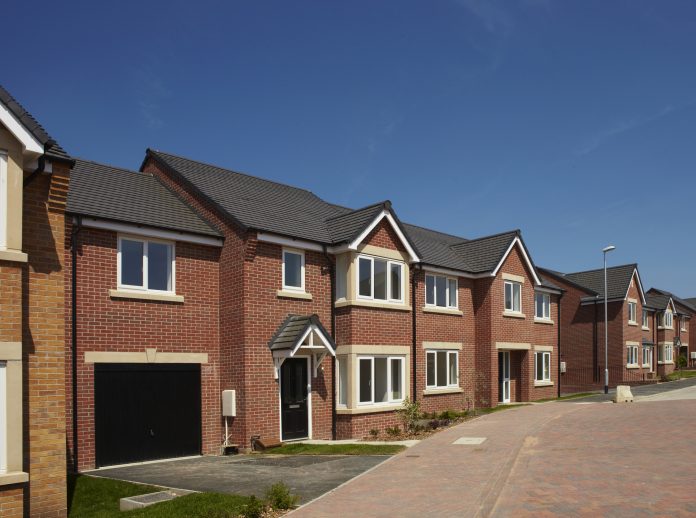In a major study funded by the Building Performance Network, Professor Rajat Gupta and Matt Greg of Oxford Brookes University have conducted a comprehensive review of key studies on new housing performance and Building Performance Evaluation methods
The UK’s legal commitment to a net-zero emissions target by 2050 has driven the need for new dwellings to be built with high standards of insulation with mechanical ventilation, high-efficiency heating systems, and renewables. Building performance evaluation (BPE) studies have shown that that low/zero energy dwellings often underperform as compared to the design specifications, due to discrepancy in building fabric thermal performance, performance of heating and ventilation systems, and resident behaviour. Past studies have demonstrated that in-use energy use can be up to three to five times more than design predictions.
However, many of these studies are not widely publicised and limited to a small audience. Moreover, national policy targets for carbon reduction cannot be met without understanding, quantifying and minimising this performance gap between design intent and reality.
Funded by the Building Performance Network, the inaugural State of the Nation study has produced a comprehensive report that provides an accessible review of key studies on new build housing performance and BPE methods, analysis of metadata as well as a look at the future of housing performance evaluation.
Using a combination of desk research and online survey with experts, the State of the nation study identified the following resources on housing performance:
- Six research programmes on housing performance.
- Five repositories and eight meta-studies that store and compile data from the individual housing performance evaluation (HPE) studies which originate from the research programmes.
- 91 new build HPE studies.
For the first time, an online and interactive spatial map on housing performance in the UK has been created that locates the 91 HPE studies along with their metadata, such as number of dwellings studied, location tenure, study duration, study type and data availability.
The 91 HPE studies cover 826 dwellings, of which 105 are Passivhaus and 721 non-Passivhaus dwellings (low energy). About 43 studies were funded by the Innovate UK BPE programme, which ran from 2010 to 2014.
BPE methods
A range of tools and methods that have been used for assessing the as-built performance (design intent compared against as-built, performance of the building fabric and installed equipment, and how residents react to it as well as effectiveness of the handover process) and in-use performance (energy use, indoor environment, resident experiences) of new build housing.
The most common method (for which data were available) used to assess as-built performance was air-permeability testing, likely to be due to compliance requirements of Building Regulations and the Passivhaus standard. Thermal imaging was also used for detecting anomalies with building fabric thermal performance.
In terms of services and system performance, the efficiency and air flow rates of mechanical ventilation with heat recovery (MVHR) systems were tested. To evaluate in-use performance, monitoring of energy use, indoor temperature and relative humidity was found to be popular, along with assessment of resident satisfaction using the Building Use Studies (BUS) questionnaire survey.
Meta-analyses of housing performance data
Meta-analyses of housing performance data provided insight into housing performance at scale. The meta-analyses covered building fabric thermal performance, energy assessment, indoor environment and resident satisfaction for Passivhaus and non-Passivhaus dwellings (low energy), as shown in Table 1.
Sample size of housing performance data analysed (no. of dwellings)
| Passivhaus | Non-Passivhaus | Total | |
| Air permeability | 50 | 138 | 188 |
| External wall U-value | 14 | 48 | 62 |
| Roof U-value | 5 | 15 | 20 |
| Whole house heat loss | 6 | 23 | 29 |
| Thermal imaging | 10 | 34 | 44 |
In-use performance: energy assessment
| Passivhaus | Non-Passivhaus | Total | |
| In-use energy data | 30 | 62 | 92 |
| Energy performance gap | 19 | 49 | 68 |
| Space heating energy use | 12 | 56 | 68 |
In-use performance: indoor environment
| Passivhaus | Non-Passivhaus | Total | |
| Temperatures & RH | 12 | 38 | 50 |
| CO2 | 12 | 28 | 40 |
In-use performance: resident satisfaction and perception
| Passivhaus | Non-Passivhaus | Total | |
| BUS surveys | 80 | 438 | 518 |
Building fabric thermal performance
Average difference between design and measured air permeability was found to be negligible amongst Passivhaus (PH) dwellings at 0.5 m3/h/m2@50Pa, but considerable at 1.9 m3/h/m2@50Pa amongst Non- Passivhaus (NPH) dwellings.
Masonry dwellings presented the highest gap in terms of airtightness, external wall U-value and whole building heat loss.
Thermal weakness at openings seemed to be endemic across the sector as issues with doors and/or windows were identified in 84% of the project sites, demonstrating a need to improve detailing, specification and workmanship. “Junctions and joints” and “roof, eaves and loft space” are also highlighted as areas requiring attention, as thermal bridging issues were pinpointed in nearly half the project sites.
In-use energy performance
Mean energy consumption in NPH dwellings was found to be 117 kWh/m2/year while PH dwellings use 62% less energy; 73 kWh/m2/year. Energy used for space heating was 2.4 times higher in NPH dwellings.
The energy performance gap (as compared to SAP) in NPH dwellings was nearly twice that of PH dwellings.
Indoor environment and resident experiences
Despite the differences in energy use, indoor temperature profiles in the heating and non-heating season were similar in PH and NPH dwellings, with mean indoor temperature ranging from 20.1 ºC-24.6 ºC. However consistently higher mean monthly CO2 concentrations were observed in NPH dwellings than in PH dwellings, with the difference being more significant in bedrooms.
Comfort and satisfaction with indoor temperature are found to be greater in winter than in summer across PH and NPH dwellings. Indoor temperature perceived to be too hot.
Future landscape of housing performance
With decarbonisation of heating and electricity, it will become important to assess not only the thermal performance of the building fabric but also energy demand profiles and resident health and wellbeing. Future technological trends that could guide HPE studies include:
- Building Information Modelling (BIM).
- Low-cost non-invasive building fabric performance tests.
- Smart metering and smart home energy management systems.
- Internet of Things-based low-cost sensors.
- Personal monitoring devices/wearable technology.
If housing performance evaluation is to become common practice on new build schemes, such tools and methods need to be available and market-ready to support this change.
For further information about the study, click here.
The Building Performance Network works to improve the performance of our built environment in actuality through the testing, interrogation and sharing of data collected in our buildings. 2020 sees the organisation advocating for changes to the Building Act to enforce measurement of operational energy use to bring about significant change in the environmental impact from buildings commensurate with reaching this country’s carbon commitments. For more on this, to find out how you can join this campaign or support our other work, please see our website, subscribe to our newsletter or contact us: info@building-performance.network
The BPN would like to thank the sponsors of this work: BEIS, Crest Nicholson, Isover, MIMA, the NHBC Foundation and Woodknowledge Wales, and our delivery partners, the Good Homes Alliance and Oxford Brookes University.
Professor Rajat Gupta
Professor of sustainable architecture and climate change
School of Architecture, Oxford Brookes University
+44 (0) 1865 741111
Building Performance Network
+44 (0)20 7704 3508
www.building-performance.network














